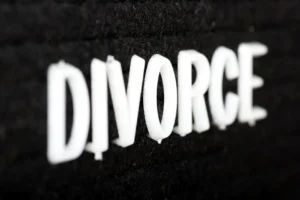PFAS Foam Litigation: Attorneys Secure $95.8M in Tyco, BASF Settlements
In a landmark development for environmental litigation, attorneys have secured substantial settlements totaling $95.8 million from Tyco and BASF in the ongoing PFAS foam litigation. This significant legal victory marks a crucial step forward in addressing the widespread contamination caused by per- and polyfluoroalkyl substances (PFAS), often referred to as “forever chemicals” due to their persistence in the environment and human body.
The settlements, part of a larger multidistrict litigation (MDL) known as In Re: Aqueous Film-Forming Foams Products Liability Litigation, represent a major breakthrough in holding chemical manufacturers accountable for the environmental and health impacts of their products. PFAS, which have been used in a wide range of industrial and consumer products, including firefighting foams, have come under intense scrutiny due to their potential links to various health issues, including cancer, thyroid disease, and developmental problems in children.
The Tyco settlement, amounting to $750 million, was preliminarily approved by U.S. District Judge Richard Gergel in the District of South Carolina. This agreement is set to benefit a class of water utilities across the United States that have been grappling with PFAS contamination in their water supplies. The settlement comes on the heels of the Environmental Protection Agency’s (EPA) finalization of national drinking water standards for PFAS, underscoring the timeliness and significance of this legal action.
BASF’s settlement, totaling $316.5 million, is another substantial victory for plaintiffs in the PFAS litigation. Of this amount, $312.5 million is earmarked for addressing PFAS contamination in drinking water, with an additional $4 million allocated for administrative costs. This settlement awaits preliminary approval from Judge Gergel, with a final fairness hearing scheduled for November 1, 2024.
These settlements are part of a broader trend in PFAS litigation, which has seen several major chemical companies agree to significant payouts in recent years. The legal landscape surrounding PFAS contamination is rapidly evolving, with implications for various stakeholders, including chemical manufacturers, water utilities, and affected communities.
One of the key aspects of the PFAS foam litigation is the class action structure of many of these lawsuits. This legal approach allows numerous plaintiffs, often water utilities or individuals affected by PFAS contamination, to join forces in seeking compensation and remediation. The class action format has proven effective in consolidating resources and presenting a united front against large chemical corporations.
The settlements with Tyco and BASF also highlight the complex nature of environmental liability in cases involving long-lasting contaminants like PFAS. These chemicals, which have been used for decades in various industrial applications, pose unique challenges in terms of attributing responsibility and determining appropriate remediation strategies. The legal proceedings have required extensive scientific evidence and expert testimony to establish the link between specific manufacturers’ products and the widespread environmental contamination.
Another critical aspect of the PFAS litigation is the role of regulatory compliance and its intersection with legal liability. As the EPA and other regulatory bodies continue to develop and refine standards for PFAS in drinking water and the environment, companies face evolving compliance requirements. The legal actions against Tyco, BASF, and other manufacturers have not only sought compensation for past contamination but also aim to influence future industry practices and regulatory frameworks.
The settlements also bring attention to the issue of corporate responsibility in environmental matters. As public awareness of PFAS contamination has grown, there has been increased scrutiny of chemical companies’ historical knowledge of the potential risks associated with these substances. The litigation has often focused on whether manufacturers were aware of the environmental persistence and potential health effects of PFAS, and whether they took appropriate measures to mitigate these risks.
The PFAS foam litigation has also raised important questions about the adequacy of existing environmental laws and regulations in addressing emerging contaminants. Many of the legal strategies employed in these cases have relied on established environmental statutes, such as the Clean Water Act and the Comprehensive Environmental Response, Compensation, and Liability Act (CERCLA), also known as Superfund. However, the unique properties of PFAS have challenged traditional regulatory and legal frameworks, prompting calls for new, specific legislation to address these “forever chemicals.”
One of the key challenges in PFAS litigation has been establishing causation between specific manufacturers’ products and the contamination found in water supplies and the environment. Given the widespread use of PFAS across various industries and the persistence of these chemicals in the environment, tracing contamination back to specific sources has often proved complex. The settlements with Tyco and BASF represent significant progress in overcoming these hurdles and establishing legal precedents for future cases.
The PFAS foam litigation has also highlighted the importance of scientific evidence in environmental law cases. Attorneys representing plaintiffs have had to rely heavily on emerging research on the health and environmental impacts of PFAS exposure. This has necessitated close collaboration between legal teams and scientific experts, underscoring the interdisciplinary nature of modern environmental litigation.
Another significant aspect of the PFAS settlements is their potential impact on water infrastructure across the United States. Many of the affected water utilities will use the settlement funds to upgrade their treatment facilities to remove PFAS from drinking water supplies. This represents a substantial investment in public health infrastructure, driven by legal action rather than traditional government funding mechanisms.
The litigation has also brought attention to the issue of environmental justice, as PFAS contamination often disproportionately affects low-income communities and communities of color. Many of these communities are located near industrial sites or military bases where PFAS-containing firefighting foams were heavily used. The settlements and ongoing litigation provide an opportunity to address these longstanding environmental inequities.
The PFAS foam litigation has implications beyond the immediate parties involved. It serves as a warning to other industries that produce or use potentially harmful chemicals, signaling a shift towards greater accountability for environmental impacts. This could lead to proactive measures by companies to assess and mitigate the potential long-term effects of their products, potentially reshaping industrial practices and chemical use across various sectors.
The legal actions against Tyco, BASF, and other PFAS manufacturers have also sparked debates about the balance between industrial innovation and environmental protection. PFAS chemicals have been valued for their unique properties, which have made them useful in a wide range of applications, from non-stick cookware to waterproof clothing. The litigation raises questions about how society can continue to benefit from technological advancements while minimizing long-term environmental and health risks.
One of the emerging issues in PFAS litigation is the concept of successor liability. As companies merge, split, or restructure, questions arise about who bears responsibility for past environmental contamination. This has been particularly relevant in cases involving companies like DuPont and its spinoffs, highlighting the need for clear legal frameworks to address corporate responsibility in the face of organizational changes.
The PFAS settlements also underscore the importance of long-term environmental monitoring and health studies. Many of the agreements include provisions for ongoing testing and research to better understand the long-term impacts of PFAS exposure. This aspect of the settlements could contribute significantly to scientific knowledge about these chemicals and inform future regulatory and public health decisions.
Another critical dimension of the PFAS foam litigation is its impact on military sites and surrounding communities. The use of PFAS-containing firefighting foams at military bases has led to significant contamination in many areas. The legal actions and resulting settlements may influence how the Department of Defense addresses this contamination and compensates affected communities.
The litigation has also raised questions about the statute of limitations in environmental cases involving long-lasting contaminants. Given that PFAS can persist in the environment for decades, traditional time limits for bringing legal claims may not be appropriate. Some states have begun to consider legislation that would extend or eliminate statutes of limitations for PFAS-related claims, potentially opening the door to more lawsuits in the future.
The PFAS foam litigation has implications for insurance law as well. Many of the companies involved in PFAS manufacturing and use are now seeking coverage from their insurers for litigation costs and settlement payouts. This has led to complex legal battles over policy interpretations and the extent of coverage for long-tail environmental liabilities.
The settlements and ongoing litigation also highlight the role of state attorneys general in environmental enforcement. Many states have taken an active role in pursuing legal action against PFAS manufacturers, often working in parallel with federal efforts and private lawsuits. This multi-pronged approach has increased pressure on companies to address PFAS contamination and compensate affected parties.
Another important aspect of the PFAS litigation is its potential impact on product liability law. The cases against Tyco, BASF, and other manufacturers have explored the extent to which companies can be held liable for the long-term environmental impacts of their products, even when those products were legally manufactured and sold. This could have far-reaching implications for how courts assess liability in cases involving emerging contaminants or newly discovered environmental hazards.
The PFAS foam litigation has also brought attention to the issue of corporate disclosure and transparency. Questions have been raised about when and how much companies knew about the potential risks of PFAS, and whether this information was adequately shared with regulators, customers, and the public. This aspect of the litigation could influence future corporate practices and regulatory requirements regarding the disclosure of potential environmental and health risks.
One of the challenges in the PFAS litigation has been quantifying damages related to environmental contamination and potential health impacts. The settlements with Tyco and BASF represent significant sums, but determining appropriate compensation levels for affected individuals and communities remains a complex issue. This challenge is likely to persist in future environmental litigation cases, particularly those involving contaminants with long-term or uncertain health effects.
The PFAS foam litigation has also highlighted the importance of alternative dispute resolution mechanisms in complex environmental cases. While many of these cases have proceeded through traditional litigation channels, others have been resolved through mediation or other forms of alternative dispute resolution. These approaches can sometimes lead to faster resolutions and more flexible settlement terms, benefiting both plaintiffs and defendants.
Another significant aspect of the PFAS litigation is its potential impact on chemical regulation at both the federal and state levels. The legal actions and resulting settlements have put pressure on regulatory agencies to develop more stringent standards for PFAS in drinking water and the environment. This regulatory push, driven in part by litigation, could lead to broader reforms in how emerging contaminants are identified, studied, and regulated.
The PFAS foam litigation also raises important questions about scientific uncertainty in legal proceedings. Given the evolving nature of research on PFAS health effects, courts have had to grapple with how to weigh and interpret scientific evidence that may not be conclusive. This challenge is likely to persist in future environmental litigation cases, particularly those involving emerging contaminants or complex environmental interactions.
In conclusion, the $95.8 million in settlements secured from Tyco and BASF in the PFAS foam litigation represent a significant milestone in the ongoing efforts to address PFAS contamination. These legal victories not only provide much-needed resources for affected water utilities and communities but also set important precedents for future environmental litigation. As the legal landscape continues to evolve, the PFAS cases serve as a powerful reminder of the complex interplay between science, law, and public policy in addressing environmental challenges. The outcomes of these cases will likely influence environmental regulation, corporate practices, and legal strategies for years to come, shaping how society balances technological innovation with environmental protection and public health.
Sources:
- https://www.robertkinglawfirm.com/personal-injury/pfas-class-action-lawsuit/
- https://pfas.pillsburylaw.com/updates-pfas-mdl-settlements-legal-strategies/
- https://www.hinshawlaw.com/newsroom-updates-insights-for-insurers-pfas-forever-chemical-regulation-litigation-insurance-coverage.html


















